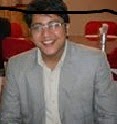 |
| Suresh Poudel |
On
November 7, this year Medical Physicists around the world are going to
celebrate 2nd International
Day of Medical Physics (IDMP) to mark the birth date of Marie Sklodowska-
Curie, the pioneer researcher on radioactivity, who was born on the same day in
1867. The theme of IDMP 2014 is “Looking
into the Body: Advancement in Imaging through Medical Physics.”
Last
year on the same day, to mark 1st IDMP, a Symposium was organized at
B. P. Koirala Memorial Cancer Hospital (BPKMCH), Bharatpur, Chitwan, Nepal. It
had been a successful event. Nepalese
Association of Medical Physicists (NAMP) is the professional organization of/for
Nepalese Medical Physicists. NAMP is small in terms of its membership
subscription. Nevertheless it has been an important organization to further the
role of medical physicists in national context and in international arena. NAMP
is a member of International Organization of Medical Physicists.
Although
International Labor Organization (ILO)
has listed medical physicists as health professions, it is the least heard
profession in Nepal. Many of us even when we are in medical professionals do
not know who medical physicists are and what exactly they do. So it has been
urgent to make everyone clear about the role of Medical Physicist in
Healthcare, particularly in diagnosis and therapy of cancer.
Medical
Physicists are basically the physicists who apply their knowledge of physics to
medicine. On the occasion of 2nd IDMP, I found it relevant to highlight
the role of Medical Physicists in medicine. According to American Association of Physicists in Medicine (AAPM) many medical
physicists are heavily involved with responsibilities in areas of diagnosis and
treatment, often with specific patients. These activities take the form of
consultations with physician colleagues. Medical physicists play a vital role
and often leading role on medical research team. Their activities cover wide
frontiers, including such key areas as cancer, heart disease, and mental
illness. In cancer, they work primarily on issues involving radiation, such as
the basic mechanisms of biological change after irradiation, the application of
high energy machines to patient treatment, and the development of new techniques
for precise treatment. Similarly in teaching often medical physicists have
faculty appointments at universities and colleges, where they help train future
medical physicists, resident physicians, medical students, and technologists
who operate the various types of equipment used to perform diagnosis and
treatment.
Besides
in hospitals, medical physicist is generally responsible for specification,
acceptance, commissioning, calibration and Quality Assurance of all
radiotherapy equipment; radiation measurement of beam data; calculation
procedures for determination and verification of patient doses; physics content
of treatment planning and patient treatment plans; supervision of therapy
equipment maintenance, safety and performance; establishment and review of QA
procedures, radiation safety and radiation protection in the radiotherapy
department. Besides they have important roles in education and research.
To
conclude, medical physicist is an important member of cancer diagnosis and
treatment team. S/he is a person who conducts scientific research on physics
and medicine and also does teaching and deals with radiation protection and
safety issues inside and outside the hospitals.
The writer is a student of Gono University, Savar, Dhaka, Bangladesh and a member of Bangladesh Medical Physics Society(BMPS)
No comments:
Post a Comment